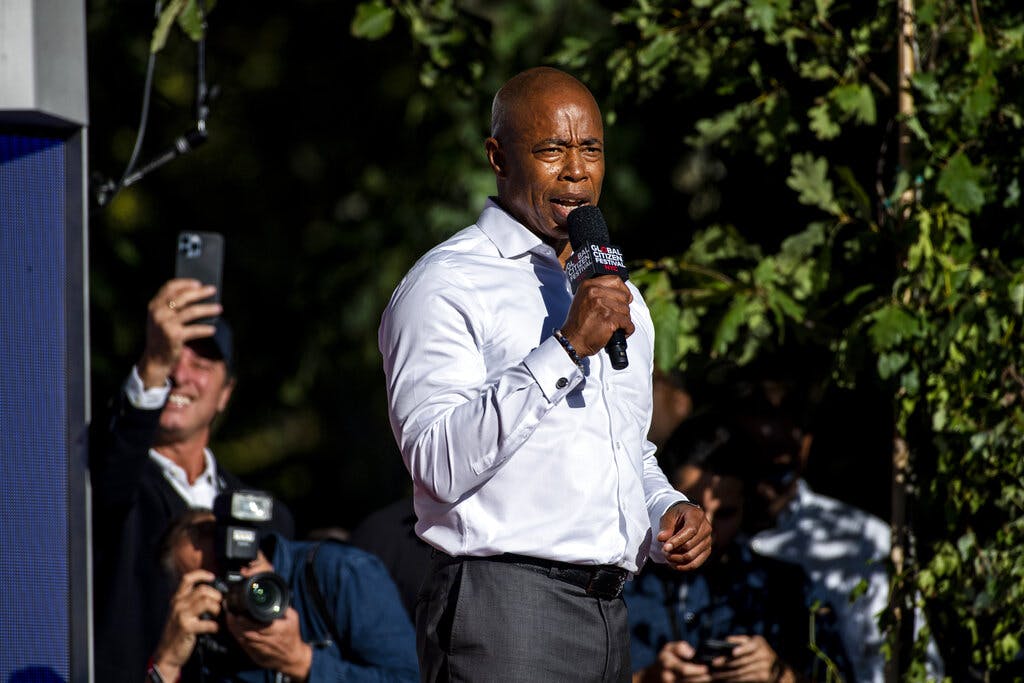New York Needs a Strategy on Homeless Migrants
The city’s Independent Budget Office estimated the one-year service costs for migrants will run close to $600 million.

Before being bumped out of the news cycle by the midterms, New York’s migrant crisis dominated local headlines.
Over a few short months, thousands had arrived from the border with no real ties to the area, no friends or family to put them up. So New York placed them in the homeless shelter system, putting real strain on the system — and costing the city.
Earlier this week, the New York City Independent Budget Office estimated the one-year service costs for migrants will run close to $600 million. Most — $487 million — of the bill is for shelter. It costs $50,000 to provide shelter for a single adult for one year, and $69,000 for a family with children.
To put that number in perspective, this year, New York City will spend more on migrants than it does on parks ($562 million), the Department for the Aging ($540 million), and libraries ($453 million).
There are now more than 70,000 people in city shelters. The surge has ebbed somewhat in recent weeks. Between July and November, New York’s main homeless shelter census grew at least 5 percent a month, notching an extraordinary 12 percent increase in September. Since mid-October, it has grown only by 1.5 percent.
Why? Local Democrats urged President Biden to change his tune, and on October 12, the Biden administration invoked public health powers to return Venezuelans, who account for a large portion of New York’s recent arrivals, who enter the United States “without authorization” back to Mexico.
In response, the mayor of El Paso, a border city responsible for half of New York’s migrant surge, announced he would stop sending buses to the Port Authority to relieve his city’s local service systems. The Adams administration began shutting down a tent complex on Randall’s Island designed to handle shelter overflow.
It turns out that securing the border makes for a saner homelessness policy. However, hopes for a sustained easing to New York’s migrant surge were thrown into question on Tuesday, when a federal judge struck down the basis behind the Biden restrictions as “arbitrary and capricious.”
Regardless, the status quo is untenable. Untreated serious mental illness, substance abuse, chronic unemployment: don’t expect homeless services to make much progress on those fronts when it’s scrambling to find a place to sleep for 70,000 people every night.
Throughout the migrant crisis, progressive politicians have made a great show of their compassion, regularly showing up at Port Authority to greet buses from the border.
Yes, the government bears a burden for a migrant without clearly defined legal status who doesn’t know English, doesn’t qualify for mainline social safety net programs, and has no strong social support to rely on — but, in many ways, a Venezuelan that just arrived yesterday is in some ways easier to help than a native homeless adult.
Having dealt with the rigors of a journey of thousands of miles, he probably is not seriously mentally ill, or otherwise disabled, or addicted to fentanyl. The average migrant is also probably more determined to work than the average native homeless adult.
Progressives have focused intensely on lifting barriers to work for the migrants. They have directed hardly any energy whatsoever, anytime recently, to boosting employment rates among the native homeless.
When was the last time any of them visited the notorious Bellevue Men’s Shelter? Sure, handing out backpacks to 8-year-old Venezuelans might make for a much more promising photo-op than being berated by a chronically homeless New Yorker over his long experience of broken promises from the system, but where should their loyalties lie?
Simply put, helping migrants is a much different proposition than helping the native homeless, and it will be difficult for the same homeless services system to perform both tasks equally well.
The federal government bears ultimate blame for the migrant crisis. It has also tested city politicians and especially the depth of their commitment to the native homeless population. They are not passing the test.

